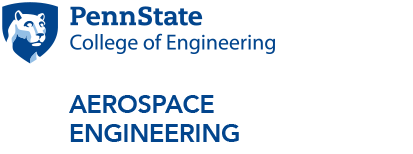
Aeroacoustics
Aeroacoustics is the study of the generation of sound by unsteady air flow. The sound could be generated by jets, fans, rotor blades, and any devices that force the air into unsteady motion.
The faculty members and students that conduct research in aeroacoustics use both experimental and computational methods.
Key Faculty:
Experimental Aeroacoustics
The majority of the measurements are performed in the department's high-speed jet noise facility. This is an anechoic room with inlet and exhaust ducts to allow air to be blown into and sucked out of the facility. This capability is used to examine the effect of forward flight on the noise generated by jet flows or the effect of wind on the noise produced by the jets on a short takeoff and vertical landing (STOVL) vehicle.
Previous and Ongoing Measurements
Previous and ongoing measurements to investigate the flow field and acoustics of jets have included: near and far field pressure measurements using microphones, surface pressure measurements with Kulite and Endevco transducers, high-speed schlieren, and shadowgraph flow visualization videography, Optical Deflectometry, Laser Doppler Anemometry, and Particle Image Velocimetry.
Recent Experimental Research
Recent experimental research has included the development of a noise reduction methodology for supersonic heated jets, such as those found on tactical fighter aircraft, and measurements of the temperature on a ground plane below a vertical impinging heated jet.
Computational Aeroacoustics
Computational aeroacoustics involves the numerical simulation of the unsteady flow and the noise it produces. Predictions can be based on steady or unsteady flow calculations. In the former case, knowledge of the average flow allows the radiated noise to be estimated using analytical methods.
The unsteady turbulent flow field can also be simulated with numerical solutions of the full equations of motion. These calculations are very computationally intensive, but can be performed on the computer clusters available in the department.
Ongoing projects include the simulation of the flow in jets with noise reduction devices and the calculation of the unsteady pressure loading on an aft deck downstream of a rectangular nozzle.
Rotorcraft Noise
More information about this research area will be available soon.
Research Areas
- Aeroacoustics
- Air-breathing Propulsion
- Astrodynamics
- Autonomous Flight and UAVs
- Computational and Experimental Fluid Dynamics
- Flight Science
- Multifunctional Structures and Nanomaterials
- Rotorcraft Engineering
- Space Propulsion and Plasmas
- Structural Dynamics and Adaptive Structures
- Vehicle Dynamics and Control
- Vehicle Systems Engineering
- Wind Energy



